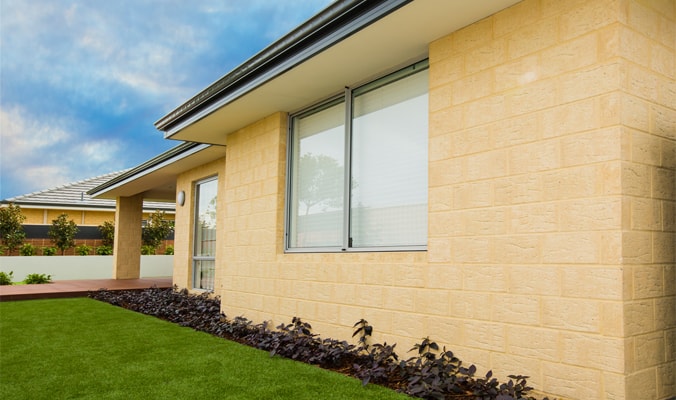Limestone is one of the most commonly used building materials because it is strong and durable. It is cut into bricks and blocks. There are several differences between the two, including the size.
Limestone bricks
Bricks are the smaller of the two and are coursed so they can be used just like normal bricks. They have a 10mm joints, while blocks are cut to allow 20mm joins. The limestone blocks are cut at the quarry and then transported to the factory for further cutting in bricks.
The bricks come cut in two different ways.
- Firstly, with faces and edges diamond cut, and perpendiculars tungsten cut.
- Or secondly, tungsten cut face and perps, with diamond cut edges.
The geological name of the limestone in the bricks is Tamala Eolianite, and it was formed in the Pleistocene Age. The type of stone is called Coastal Limestone and it has a Calcium Carbonate content of between 70%-95%. Of a cream colour, the compressive strength is 3.5Mpa Avg. Bricks come in 6 different sizes.
Bricks can be used in many projects from planter boxes to garden walls and from wall cladding for single or double storey buildings to even larger commercial buildings. These bricks do not have cement added; they are completely natural limestone.
Limestone blocks
There are two different types of limestone blocks.
- Natural Tamala limestone blocks with quarry cut finishes on all surfaces. These are useful for fences, feature walls, piers and retaining walls. The grain is fine to medium with a compressive strength of 3.5 Mpa. There can be waste if a block splits or breaks which means they are not quite as environmentally friendly as the reconstituted blocks below, however it is still a beautiful product worthy of attention and frequently found enhancing an urban environment with the elegant shape and colour.
- Reconstituted limestone blocks. This product is made by mixing crushed limestone with cement, resulting in a versatile and durable building material suitable for all kinds of commercial and residential buildings, floors and paving, walls and screens. They are environmentally friendly as there is no waste and this makes them cost effective.
Another benefit of reconstituted limestone blocks is that they offer acoustic and thermal properties, making them ideal for walls where noise is a problem. These can be in public buildings or as external walls to cut traffic noise into parks or residential areas. Because cement is added, the colours range from cream to grey and the texture is medium to coarse.
These blocks come in 15 different sizes from 350x245x165mm through to 1000x350x350mm, with bevelled, flat and flat splits available, so they actually come in mini brick sizes through to one metre long blocks. The compressive strength ranges from 5Mpa-8Mpa, depending on the size. There will be quite a variation in the colour and texture.
So if you are looking for a building material that is strong, durable and aesthetically pleasing, limestone bricks or blocks fits the bill. It is one of the most beautiful building materials around and will certainly add value to your home, no matter whether you use it for floors, walls, paving or bench tops.
It is better than many building materials because it cannot burn or be eaten by termites and besides, many beautiful patterns can be made by fitting different sized bricks or blocks together. Stone is one of the best building materials there is.
